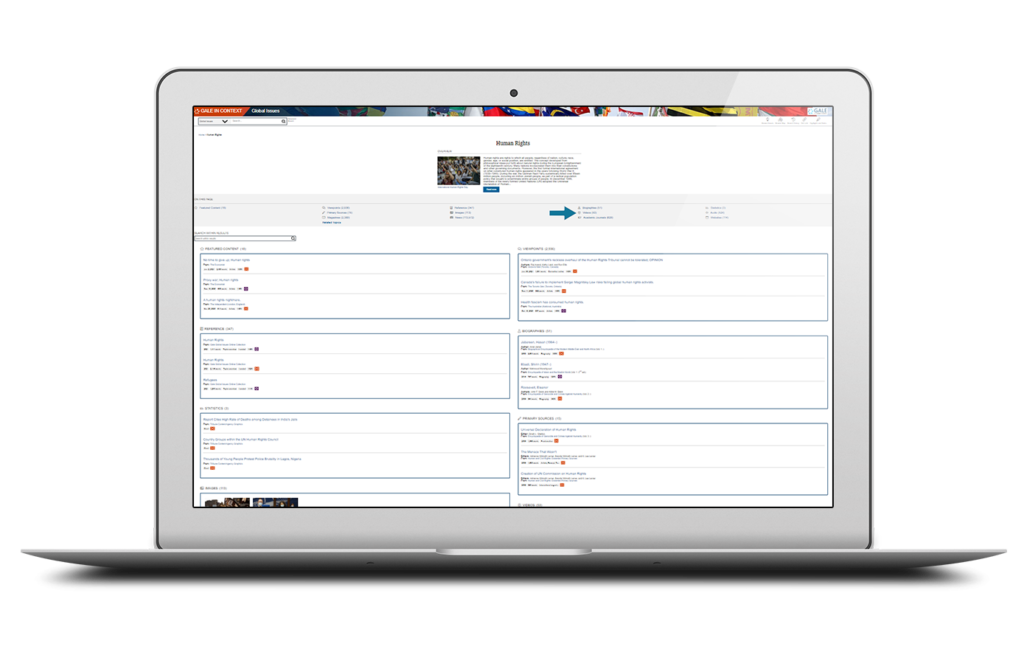| By Gale Staff |
Student engagement. Two words that live rent-free in the mind of every educator. What priorities to set. How to keep students and teachers motivated. When to adjust expectations. What resources to use. It’s all part of a big puzzle educators work tirelessly to solve.
In the same way students grow and mature, student engagement must follow a similar trajectory to be effective. What worked in middle school isn’t necessarily going to work in high school. Content becomes broader, critical thinking and problem-solving come into play, and learning becomes less about memorizing key concepts and more about applying them.
As lessons, reports, and projects become more complex, so do students’ lives and interests. High school students are uniquely affected by their environment, increasingly aware of topical issues and want to be part of the larger discussion in a meaningful way. TikTok, YouTube, discussion threads—this is how information is transmitted and consumed, but often without the trusted facts and proper context students need.
Video is a medium that resonates with students at every age. According to an EdWeek article on the topic, “Administrators and classroom educators say that the most useful features for engagement incorporate short videos.”1 Gale In Context student resources have continued to adapt to the needs of students and educators, with the need for greater student engagement as a top priority.
One of the newest ways we’re accomplishing this is with a Gale video series that is embedded into Gale In Context databases. These videos help educators present a balanced overview of current events—which are often complicated and highly charged—using a format that promotes engagement and supports differentiated learning. The Gale video series includes videos on the top-searched topics in Gale In Context: Opposing Viewpoints and other Gale databases, such as access to health care, decolonization, environmental justice, human rights, immigration, the impact of COVID-19, Indigenous peoples’ rights, racism, and sports and gender.
Who would benefit from the Gale video series?
The Gale video series was created for students at various levels. Video content is at a 10th-grade reading level, making the videos best for high school students and beyond. The videos are ideal for anyone who wants to explore topics and different viewpoints from a more objective lens.
Teachers find the videos helpful because they can assign one or multiple videos to students as part of their reading assignment.
How do these videos support differentiated learning?
The Gale video series is a game-changer for students who have a hard time getting through complicated terminology, students who have trouble focusing during long lectures, and students who have learning delays or difficulties with reading.
All videos include closed captioning, and key terms are brought out front in bold text. This helps students—especially those with visual impairments—hear how words are correctly pronounced.
At the end of each video, students can answer critical-thinking questions about the material. This ensures that students pay close attention to the content and think about it more deeply.
In which Gale In Context products are the videos included?
If your school has access to Gale In Context databases, you can find more than 75 videos in Gale In Context: Global Issues, Gale In Context: Opposing Viewpoints, and Gale In Context: Science. New videos are added throughout the school year, so be sure to check for updates.
How do I access videos from the Gale video series?
Videos are featured in the video section on the main portal page and on applicable topic pages within the products. You can also find videos when searching by topic. Type the topic in the search bar, “human rights” for example, and the results will show information in each format that is available to you.
Ready to learn more? Explore the Gale In Context resources today.
1. Harwin, Alex. “What Are the Product Features That Engage Students during COVID-19?” EdWeek Market Brief, EdWeek Research Center, September 10, 2020.


